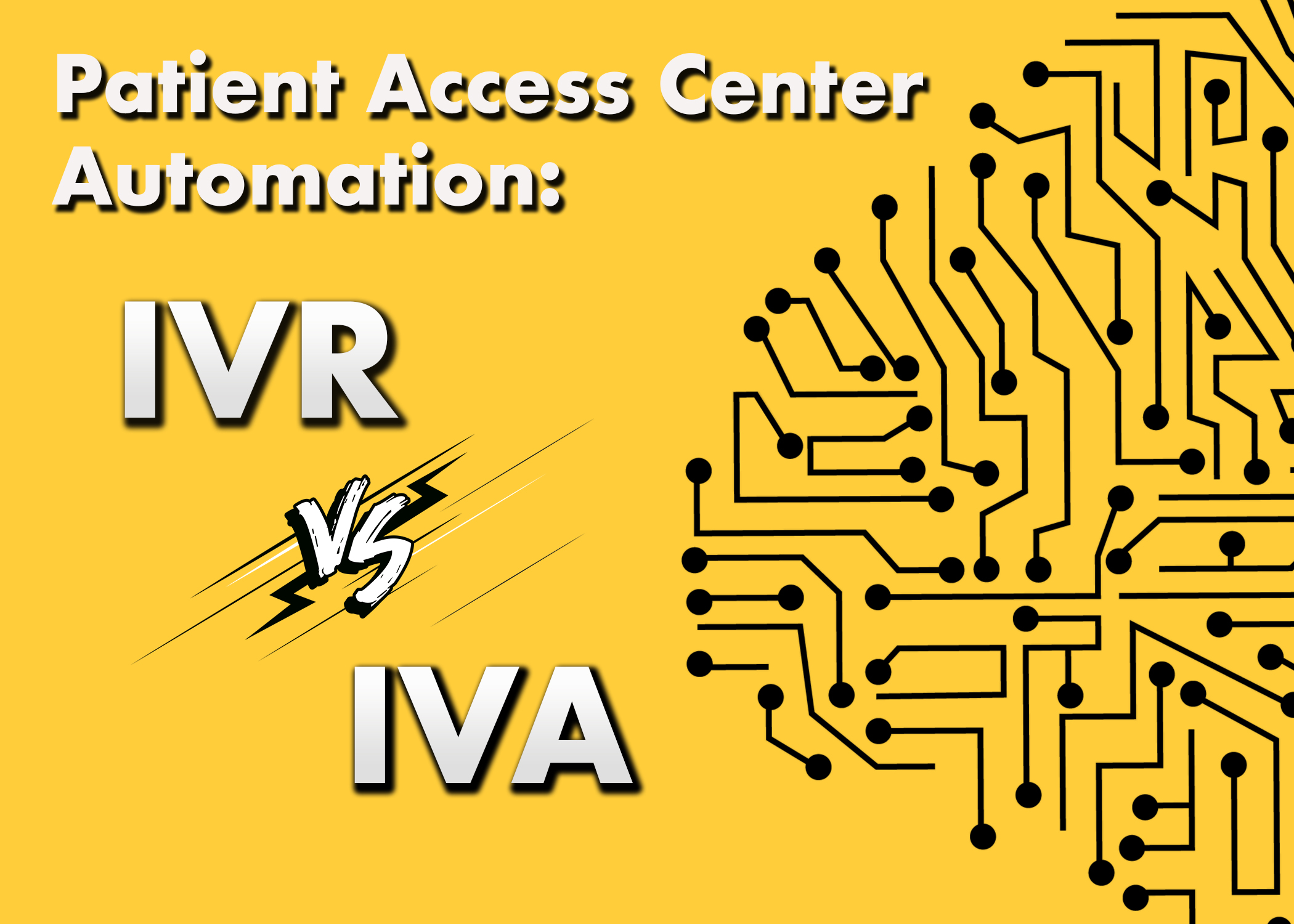Patient Access Center Automation: IVR vs. IVA
Advancements in AI-powered automation are raising the bar for patient access centers.
Automated solutions help contact centers handle routine inquiries. This reduces hold times for callers and frees up human agents to speak to people who really need help. When callers speak naturally and self-serve easily, it reduces the number of “calls that don’t belong” and improves first call resolution (FCR) for front line operators and contact center agents.
Patients shouldn’t have to navigate communication barriers created by outdated call routing or old-fashioned IVRs. Modern self-service solutions are the key to running a successful contact center, but with so many choices, it’s difficult to know which option is best. IVRs and IVAs enable easier self-service and are two of the most versatile and effective automation options. But what are they, and what’s the difference?
IVRs
IVRs, or interactive voice response systems, greet patients at the start of their call to manage call volume at the switchboard. They work like operators to direct callers to the department, person, or resource they need. IVRs can be as basic as phone trees, which offer a pre-recorded menu of options with corresponding numbers for callers to press on their dialpad. These IVR menus often use synthetic, robotic voices, which add friction to the call and hinder patient engagement. Modern IVRs transform outdated touch-tone menus into voice-driven systems with advanced speech recognition. Instead of a long list of departments or options, Parlance speech-enabled IVRs deliver a more modern solution. They allow callers to speak naturally and connect instantly; no long hold times, no confusing menus, no numbers to press. However, the benefits of IVRs are limited to basic call routing. What happens to callers once they self-serve? Are they met with another IVR menu, or are they able to accomplish their objective and get their needs met? The Parlance solution combines our proprietary phonetic names database, with AI/NLP/NLU, and integration into EHR systems to deliver offload of PBX switchboards that is unrivaled in the industry. Our managed service delivery means that we take responsibility for ensuring callers get through to their final destination. Health systems save money through optimization of switchboard operations and better utilization of human operators.
IVAs
IVAs, or intelligent virtual assistants, are the future of automation in patient access centers. They streamline caller experiences by incorporating conversational AI with convenient speech-driven self-service. Patient access center agents receive extensive, expensive training to accurately assess and attend to patient needs. Their time is valuable and shouldn’t be wasted on routine call management. In addition to directing callers, IVAs can administer COVID screenings, confirm appointments, and fulfill other patient inquiries that don’t require support from a human. When routine or repetitive tasks that need not be handled by an agent are completed through self-service, handle time is reduced, average call costs are lowered, and highly-trained agents are able to focus on patients who need complex support. This improves FCR rates, while reducing operational and labor costs for health systems.
IVR or IVA: Which is Best?
Both modern IVRs and IVAs are great tools for reducing call volume to the switchboard, optimizing access center operations, and improving patient experience. But which is right for your health system?
In theory, IVRs streamline the beginning of a caller’s journey in a personalized and conversational manner and seamlessly connect them to the resources they need. This, however, is dependent on the health of the data directory that is behind the IVR technology. Healthcare directories have a 30% average yearly churn rate. As a managed service, Parlance takes responsibility for daily database maintenance, ongoing tuning and augmenting of the contact directory database to ensure that it remains authoritative. If an IVR solution does not have an authoritative directory, the solution offloads far fewer calls. While Modern IVRs offer a more convenient method to touch-tone phone trees, they primarily contain and deflect calls by directing callers towards live agents and other destinations. This shuffle forces callers to spend more time and energy on simple tasks. IVA improves the functionality of IVR so that patients are able to effortlessly self-serve, quickly finding information and completing tasks without waiting for a human agent. AI-powered virtual assistants leverage caller ID and EHR data to assess the probability of why a person might be calling and offer reasonable corresponding options. This reduces caller friction, improves patient experience, and frees up patient access center agents to be more available for callers who need complex support. Lost revenue is reclaimed when fewer callers have to wait on hold for extended periods and call abandonment declines. Productive, natural, and effortless conversations help your patients get things done fast and that creates better caller experiences while saving money on labor and operations.
By Amy Murphy




